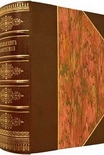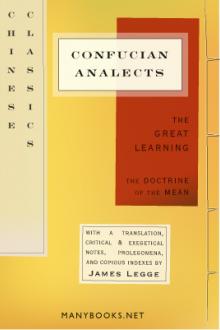Myths and Legends of China by E. Werner (free ebook reader for iphone TXT) 📗

- Author: E. Werner
Book online «Myths and Legends of China by E. Werner (free ebook reader for iphone TXT) 📗». Author E. Werner
General Government
The general division of the nation was into the King and the People, The former was regarded as appointed by the will of Heaven and as the parent of the latter. Besides being king, he was also law-giver, commander-in-chief of the armies, high priest, and master of ceremonies. The people were divided into four classes: (1) Shih, Officers (later Scholars), consisting of Ch’ên, Officials (a few of whom were ennobled), and Shên Shih, Gentry; (2) Nung, Agriculturists; (3) Kung, Artisans; and (4) Shang, Merchants.
For administrative purposes there were at the seat of central government (which, first at P’ing-yang—in modern Shansi—was moved eleven times during the Feudal Period, and was finally at Yin) ministers, or ministers and a hierarchy of officials, the country being divided into provinces, varying in number from nine in the earliest times to thirty-six under the First Emperor, 221 B.C., and finally twenty-two at the present day. At first these Page 29provinces contained states, which were models of the central state, the ruler’s ‘Middle Kingdom.’ The provincial administration was in the hands of twelve Pastors or Lord-Lieutenants. They were the chiefs of all the nobles in a province. Civil and military offices were not differentiated. The feudal lords or princes of states often resided at the king’s court, officers of that court being also sent forth as princes of states. The king was the source of legislation and administered justice. The princes in their several states had the power of rewards and punishments. Revenue was derived from a tithe on the land, from the income of artisans, merchants, fishermen, foresters, and from the tribute brought by savage tribes.
The general structure and principles of this system of administration remained the same, with few variations, down to the end of the Monarchical Period in 1912. At the end of that period we find the emperor still considered as of divine descent, still the head of the civil, legislative, military, ecclesiastical, and ceremonial administration, with the nation still divided into the same four classes. The chief ministries at the capital, Peking, could in most cases trace their descent from their prototypes of feudal times, and the principal provincial administrative officials—the Governor-General or Viceroy, governor, provincial treasurer, judge, etc.—had similarly a pedigree running back to offices then existing—a continuous duration of adherence to type which is probably unique.
Appointment to office was at first by selection, followed by an examination to test proficiency; later was introduced the system of public competitive literary examinations for office, fully organized in the seventeenth century, and abolished in 1903, when official positions were thrown open to the graduates of colleges established on a modern basis. Page 30
In 1912, on the overthrow of the Manchu monarchy, China became a republic, with an elected President, and a Parliament consisting of a Senate and House of Representatives. The various government departments were reorganized on Western lines, and a large number of new offices instituted. Up to the present year the Law of the Constitution, owing to political dissension between the North and the South, has not been put into force.
Laws
Chinese law, like primitive law generally, was not instituted in order to ensure justice between man and man; its object was to enforce subordination of the ruled to the ruler. The laws were punitive and vindictive rather than reformatory or remedial, criminal rather than civil. Punishments were cruel: branding, cutting off the nose, the legs at the knees, castration, and death, the latter not necessarily, or indeed ordinarily, for taking life. They included in some cases punishment of the family, the clan, and the neighbours of the offender. The lex talionis was in full force.
Nevertheless, in spite of the harsh nature of the punishments, possibly adapted, more or less, to a harsh state of society, though the “proper end of punishments”—to “make an end of punishing”—was missed, the Chinese evolved a series of excellent legal codes. This series began with the revision of King Mu’s Punishments in 950 B.C., the first regular code being issued in 650 B.C., and ended with the well-known Ta Ch’ing lü li (Laws and Statutes of the Great Ch’ing Dynasty), issued in A.D. 1647. Of these codes the great exemplar was the Law Classic drawn up by Li K’uei (Li K’uei fa ching), a statesman in the service of the first ruler of the Wei Page 31State, in the fourth century B.C. The Ta Ch’ing lü li has been highly praised by competent judges. Originally it sanctioned only two kinds of punishment, death and flogging, but others were in use, and the barbarous ling ch’ih, ‘lingering death’ or ‘slicing to pieces,’ invented about A.D. 1000 and abolished in 1905, was inflicted for high treason, parricide, on women who killed their husbands, and murderers of three persons of one family. In fact, until some first-hand knowledge of Western systems and procedure was obtained, the vindictive as opposed to the reformatory idea of punishments continued to obtain in China down to quite recent years, and has not yet entirely disappeared. Though the crueller forms of punishment had been legally abolished, they continued to be used in many parts. Having been joint judge at Chinese trials at which, in spite of my protests, prisoners were





Comments (0)